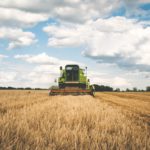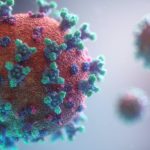Almost three years ago, iSelect strategically refocused its investment thesis on identifying the synergies between food and healthcare. At the time, food and healthcare were two completely independent, siloed verticals. But, the fact is, the more that we understand about disease and the better that we understand the science of food, the more clearly that we see how interconnected they are.
This pivot has changed how we identify investments and is helping to drive our success.
iSelect is a pioneer in this method of identifying emerging investment opportunities based on their potential to impact both the food and healthcare sectors. Generally, investment funds are either focused on the food and/or agriculture sectors and are newly attempting to understand the complexities of the healthcare sector, or alternatively they are primarily focused on the healthcare sector and newly attempting to understand the complexities of food and agriculture.
Similarly, when investors talk about the food system, they generally acknowledge the need to double protein while simultaneously improving yield, taste, nutrition, farmer profitability, and sustainability. We understand this need from an agricultural perspective, as well. Namely, we understand that in order to double the amount of available protein in the food system, there needs to be increased crop biodiversity.
In addition to increasing nutritional and protein diversity, increasing crop diversity improves soil health. Improved soil health has shown to increase nutrient uptake. It’s all interconnected.
And, because we understand the nuances of the food, agriculture, and healthcare sectors, we have an edge in identifying companies that have the potential to propel a virtuous cycle of sustainability.
In much the same way, when investors discuss the healthcare sector they tend to focus on the top 10 chronic diseases and their potential cures. But, as a growing body of evidence increasingly demonstrates that chronic diseases are related to food, specifically sugars and allergens that cause inflammation, its easy to see that solutions to disease are not necessarily limited to healthcare.
We know that a lot of disease states are due to inflammation, which is potentially preventable through food changes.
As science advances, it’s providing a much deeper understanding of how food consumption impacts health, specifically how food impacts our microbiomes. What happens to a person’s microbes as they digest specific foods? This question was previously ignored or simply overlooked.
Not only are we still invested in genomics, genetics, and more broadly, personalized medicine, we are also interested in how personalized nutrition has the potential to prevent disease. Understanding a person’s microbiome, including their genetics and the diseases that those help to shape can educate a person about what they should and shouldn’t be consuming.
Our core belief is that, for any disease state, there is more than one solution. In certain instances, a therapeutic might be the right solution. In others, early diagnostics might be. Diagnostics, however, should ultimately give better insights into what solutions might be most effective.
For example, would a therapeutic solution in the form of a small molecule, a biologic, or a food substance work best?
On a broader scope, we are also interested in the socioeconomic impact of health. We know that there is an excess of inexpensive foods filled with abundant calories and void of any nutrition, specifically in certain geographies. How do we make tasty, healthy food more affordable and more available? What does it mean to be able to try to deliver healthcare to the rural poor in the United States or elsewhere? How is the health of people in rural areas impacted by the food available to them?






